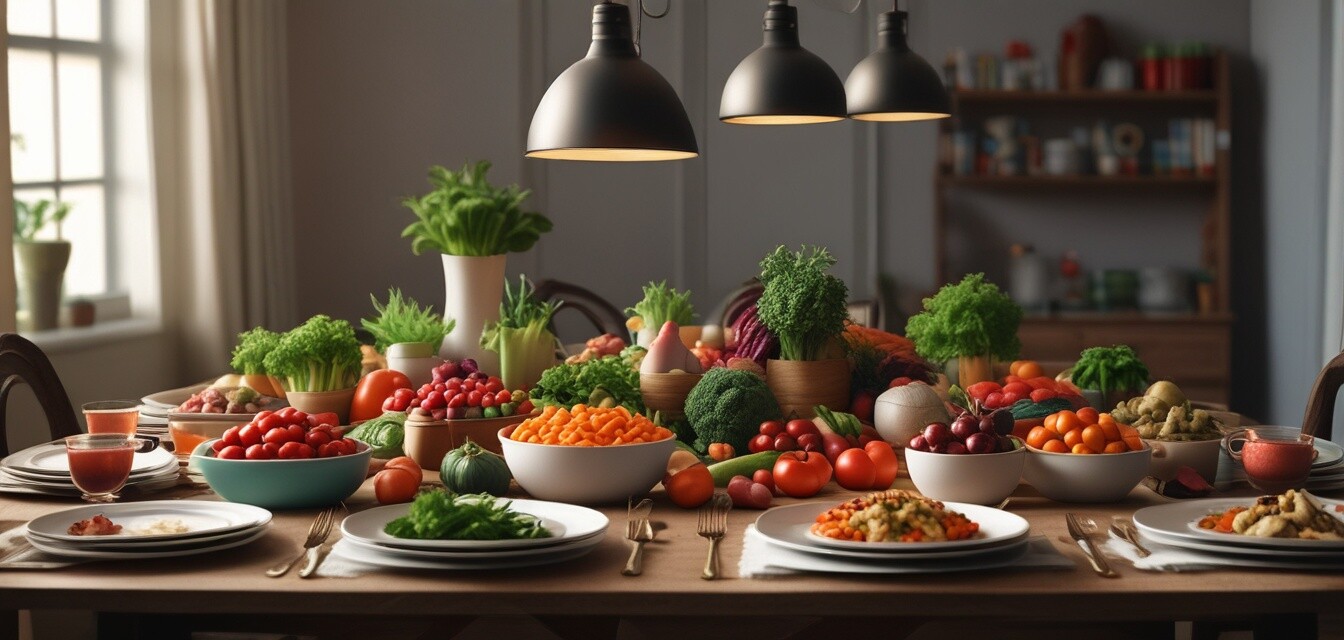
Disclosure: The FTC requires that this article indicate that it was created using AI and is not based on personal experience. It includes affiliate links, which means we may earn a commission if you purchase through these links at no extra cost to you. As Amazon Associates, we earn from qualifying purchases. Product recommendations and endorsements were generated by AI and do not reflect personal opinions or real-world use.
Creating Allergen-Free Meals for Large Groups
Key Takeaways
- Identifying and avoiding common allergens is crucial in meal planning.
- Utilize ingredient substitutions to maintain flavor and texture.
- Effective meal planning can ease cooking for large groups.
- Presenting meals attractively enhances the dining experience.
Cooking for large groups can be a delight, but when it comes to preparing meals that cater to allergen-sensitive individuals, it requires additional diligence and creativity. Whether you are preparing for a family gathering, a community event, or a professional function, understanding how to create allergen-free meals without sacrificing flavor is essential. This guide will walk you through some tips and techniques to make that possible.
Understanding Common Allergens
Before diving into meal preparation, it is important to be aware of the most common allergens that could affect your guests. Here’s a quick reference table of the primary allergens:
| Allergen | Foods Typically Containing Allergen |
|---|---|
| Peanuts | Snacks, sauces, and baked goods |
| Tree Nuts | Granola bars, desserts, and salads |
| Dairy | Cheese, milk, and cream-based dishes |
| Soy | Sauces, tofu, and processed foods |
| Wheat | Breads, pastas, and baked goods |
| Eggs | Baked goods, mayonnaise, and dressings |
| Fish | Seafood dishes, sauces |
| Shellfish | Seafood dishes, stocks |
Meal Planning Strategies
Good planning is the backbone of any large-scale cooking effort. Here are some strategies to effectively plan allergen-free meals:
- Consult with Guests: Ask your guests ahead of time about any allergies and restrictions they may have.
- Create a Master Menu: Develop a menu that is entirely allergen-free or has multiple options that cater to various allergies.
- Prepare Ingredients in Bulk: Prep ingredients in advance, which will allow you to create meals more efficiently on the event day.
- Test Recipes: Before the event, test your recipes to ensure they meet flavor and allergy requirements.
- Set Up a Grill or Buffet: This allows guests to serve themselves and have control over what they consume.
Flavorful Ingredient Alternatives
When preparing allergen-free meals, flavor should never be compromised. Here’s a table of common allergenic ingredients and their equally delicious substitutes:
| Allergenic Ingredient | Flavorful Substitute |
|---|---|
| Dairy Milk | Almond, oat, or coconut milk |
| Wheat Flour | Coconut flour or almond flour |
| Eggs | Flaxseed meal or applesauce |
| Butter | Coconut oil or vegan butter |
| Soy Sauce | Coconut aminos or homemade broth |
Cooking Techniques to Streamline the Process
Efficient cooking techniques are essential for large groups. Here are some methods that can help save time:
- One-Pot Meals: Minimize cleanup and cooking time by making meals in one pot or pan.
- Slow Cooking: Use slow cookers or pressure cookers to prepare hearty meals with minimal monitoring.
- Batch Cooking: Prepare large quantities of a single dish, which can be stored and served later.
- Utilize Freezer-Friendly Recipes: Cook meals in advance and freeze them; just reheat them before serving.
Presentation Matters
Presenting food in an appealing way makes a meal more enjoyable. Here are some tips for beautiful presentation:
- Use Color: Incorporate colorful vegetables and garnishes to make dishes visually appealing.
- Serve on Beautiful Dinnerware: Simple tableware that is aesthetically pleasing creates a more inviting atmosphere.
- Create a Buffet Setup: Allow guests to see their options and serve themselves, which also promotes interaction.
Wrapping Up
Preparing allergen-free meals for large groups doesn’t have to be daunting. By understanding common allergens, employing strategic planning, utilizing substitutes, and streamlining cooking techniques, you can create a satisfying dining experience that caters to everyone’s needs. For more tips on effective cooking for groups, check out our Tips and Techniques blog category.
Pros
- Accommodates various dietary needs.
- Enhances guest satisfaction and comfort.
- Encourages creativity in meal preparation.
Cons
- Requires thorough knowledge of allergens.
- Budget may vary depending on ingredient substitutions.
- Extra planning and prep time may be needed.
Additional Resources
For more insights and expert advice on cooking for groups, take a look at our related resources:
- Buffet and serving essentials
- Buying guides for large cookware
- Food storage solutions
- Large cooking pots and pans
- Cast iron cookware for large meals